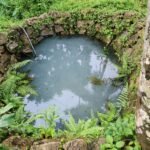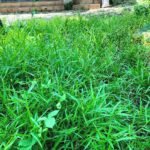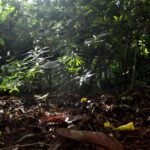Grass, the super restorer

The first photo shows a carpet of the invasive weed Wedelia. I believe Wedelia has the potential to prevent people from farming. You might think I'm exaggerating, but many fallow lands are now under the grip of this invasive plant.

The second photo shows the same patch completely covered with grass after eradicating Wedelia.

So what was the strategy to manage this weed on a small area and what was the learning?
1. Stop using brush cutter mindlessly - so the first step was to ensure blind brush cutting by a hired person is banned.
2. Selective pulling out of Wedelia and allowing everything other than Wedelia to colonise. This includes any small plant that crops up after pulling out Wedelia. You could just plant any food crop after pulling this out by ensuring there is enough mulching with dry leaves.
3. In the absence of native grass in the patch, transplanted grass from other areas to quickly cover the exposed soil after pulling Wedelia.
4.Ensure there is regular scouting of the area for Wedelia that pops up.
5. An entire year the area was left untouched for the grass to grow and seed. The next generation of seeds were allowed to be dispersed for a good seed stock on the ground to cover any old Wedelia. And keep scouting for Wedelia that crops up.
NOTE: Brush cutting areas covered by Wedelia can get Wedelia out of control. Brush cutting removes grass and all native species trying to establish and Wedelia multiplies when chopped.
Fundamentally, allow grass or any other native shrubs after removing wedelia. Now that the grass has taken over, all it needs is a bit of trimming in areas where we need to walk.
PS: Wedelia pulling is much more gratifying than watching mobile reels. It also strengthens your wrist muscles. Isn't it better than pulling people's legs? Urban folks wanting to volunteer in the rural should just go and pull out Wedelia from farmers' lands - you will be doing a great service!
My reco is for Governments to leverage MNREGA and their women force to pull this from all paddy fields.
Much needed for the organic food security of this great nation.
Meera Chandran has more than a decade of experience working with hill communities in restoration of forest lands and habitat conservation by conserving 150+ tree species of Western Ghats including RET. She works as a ‘Squirrel’ @ Forest First sowing seeds of environmental wisdom across communities.



